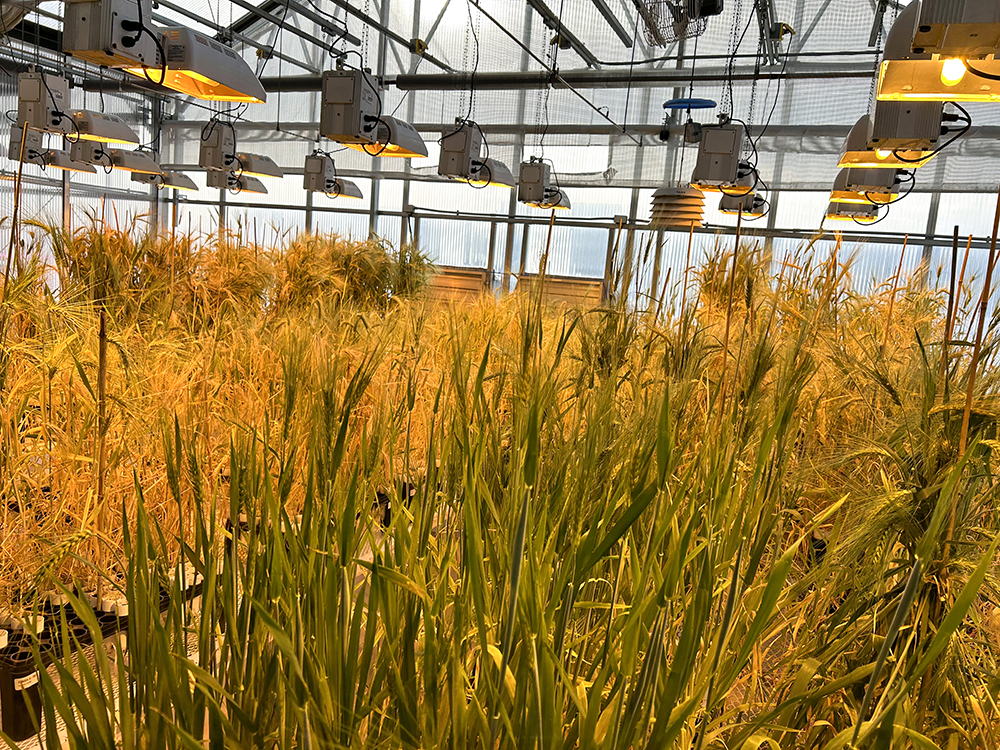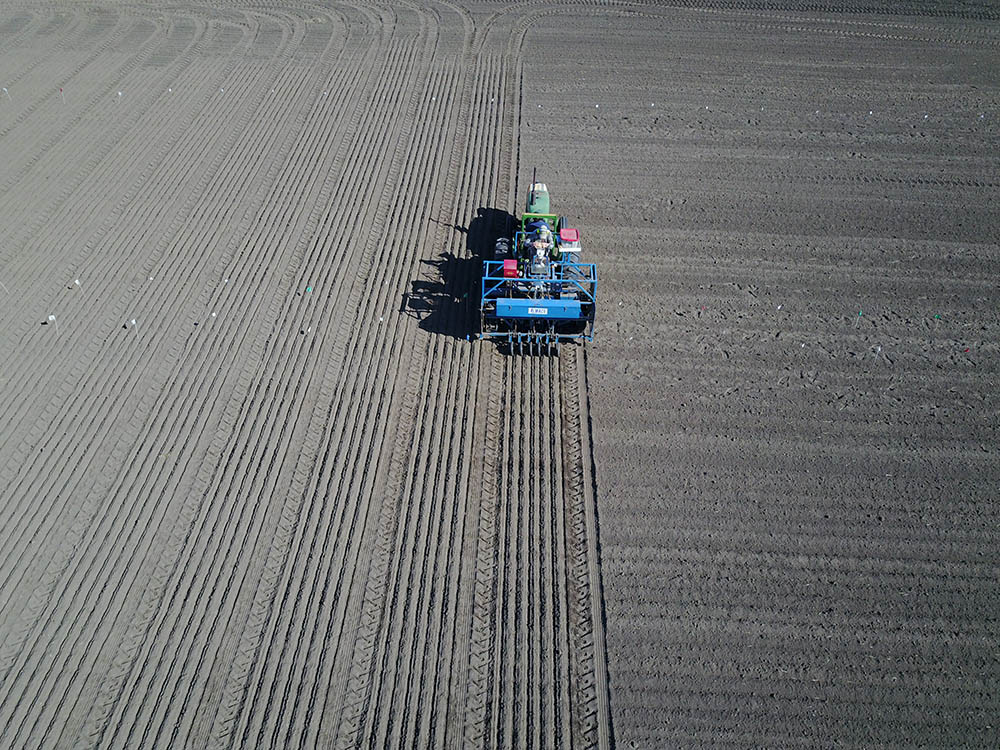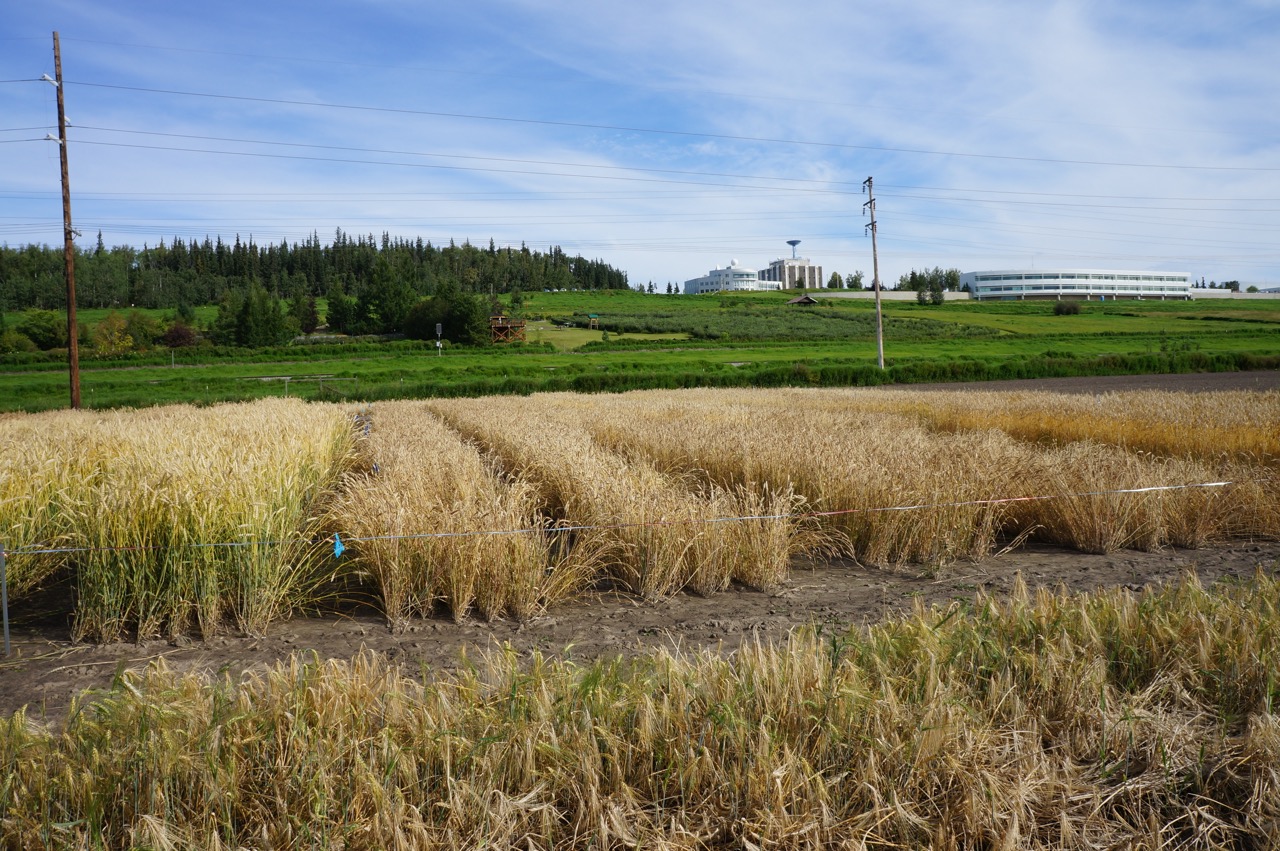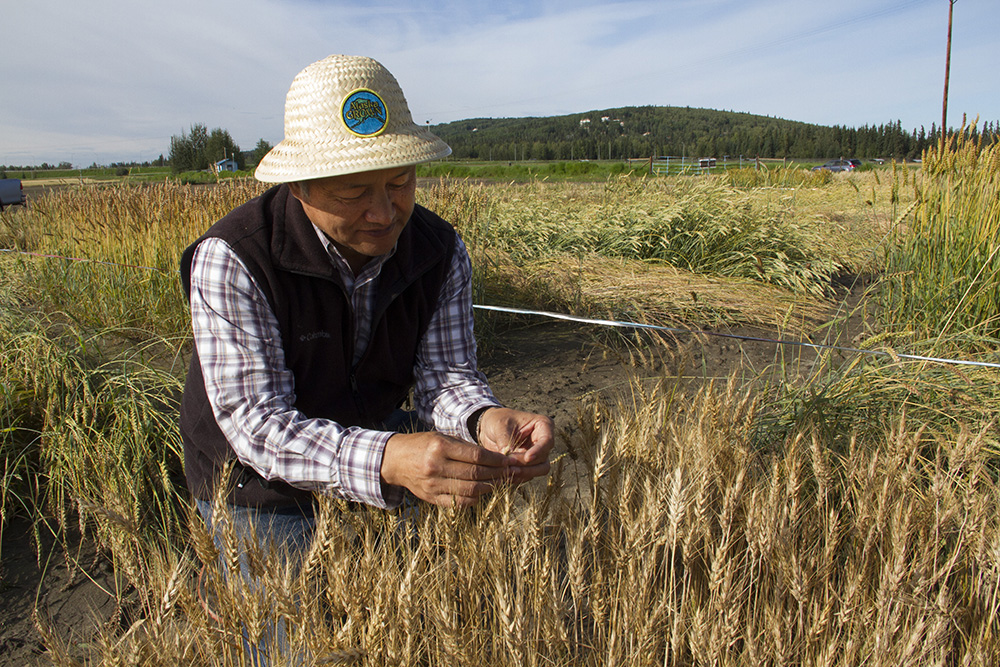Breeding barley to thrive in Alaska’s challenging environment


Alaska isn’t known for its production of barley, wheat and oats, but Jakir Hasan, Research Assistant Professor of Plant Genetics, and fellow researchers are working to change that. They collected 700 barley genotypes, which were bred or collected by 109 breeding programs from 26 countries, and planted them in the AFES West Ridge greenhouse.
By replicating similar daytime hours and temperatures as an Alaska spring and winter in the greenhouse, Barley researchers were also able to identify the genotypes that had higher grain yields and shorter maturation times than the cultivars currently grown in Alaska.
The next step is taking the most successful cultivars from the greenhouse and planting their seed at UAF experimental farms in Fairbanks, Delta Junction and Palmer and seeing how they do under conditions Alaskan farmers would be using to grow barley. Plants must hold up to wind and rain and ripen before winter sets in. This process of greenhouse and field testing is repeated until the pool of candidates is narrowed down to the most ideal cultivars for commercial production in Alaska. Desirable traits are high grain yield, a strong stem to keep the plant standing upright, and the capability to mature within ~70 days.
Blending traditional plant breeding methods with modern plant breeding techniques and genomics. Jakir and his team are also working to identify genetic factors that limit the productivity of small grain crops in colder and sub-arctic climates. Some characteristics they are looking at include crop adaptability, cold tolerance and disease resistance.
The heads of barley are known as spikes and consist of sets of six spikelets along nodes on a central stem. Two-row varieties have two fertile spikelets per node, giving two kernels of barley, while all spikelets on six-row varieties are fertile, giving six kernels of barley. Two-row barley variety is used for malting, and six-row barley is used for food or feed.
Finding the best early-maturing spring wheat variety
The quest for a spring wheat variety that grows well in Alaska has been going on for more than 200 years, since Russians reportedly tried to grow wheat for bread flour for the Russian American Co. fur trading posts in the 1790s. Trials continued at agricultural experiment stations in Sitka, Rampart and Palmer in the early 1900s, and several varieties were developed, including Ingal in 1981.
University of Alaska Fairbanks agronomist Mingchu Zhang is continuing the research with Bob Van Veldhuizen, a research assistant in agronomy and soils. Zhang and Van Veldhuizen have grown as many as 80 varieties of wheat each season, including the crosses, parent varieties of the crosses and 68 varieties obtained from northern European countries, including Sweden, Finland, Norway, Denmark and Switzerland.
All varieties are grown in a one-acre plot at the The process of selection, however,will take years. They expect to grow all varieties again next year and then select for the varieties that mature early, don’t shatter (grains falling to the ground before harvest), have high yields and stand erect for harvest. The varieties will also be tested to determine nutritive value, baking quality and shelf life. The selection process for a wheat variety spans three to five years.
Zhang believes that, with Alaska’s warming climate, more opportunities may exist to find or develop a wheat variety that grows well in Alaska, and growing wheat in the state, can help with food security.



